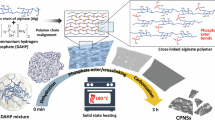Abstract
Carbon capture and storage have involved high cost and an earthquake threat. Coal in NaOH-natural seawater (NSW) can produce clean coal, and organic carbon enriched pretreated sweater (PSWS) can be used to grow Spirulina maxima. However, with freshwater shortage, high cost CO2 feedstock incurs S. maxima biomass production, and using PSWS should be considered as an alternative. NaHCO3 and Na2CO3 were used to sediment Mg2+ and Ca2+ of NSW to resolve turbidity and decreasing phosphate solubility. Here, we show that pre-combustion coal and NaOH concentration calculated by our devised formulae for any salinity could dilute volatile matter 19.8 Kg plus CO2 116.50 to 168.89 Kg Ton^-1^ coal in NaOH-NSW by sedimentation Mg2+ and Ca2+ of 99.91% and 32.52%, respectively, and clean coal will be produced. S. maxima biomass production cost was 3.35 times lower in PSWS medium than that of the standard. This method will be used for carbon sequestration and low cost biomass production.
Similar content being viewed by others
Article PDF
Author information
Authors and Affiliations
Corresponding author
Rights and permissions
About this article
Cite this article
Affan, M., Lee, DW., Park, HS. et al. Clean Coal and Spirulina maxima (Cyanobacteria) Production through Alkaline-Seawater. Nat Prec (2012). https://doi.org/10.1038/npre.2012.6930.1
Received:
Accepted:
Published:
DOI: https://doi.org/10.1038/npre.2012.6930.1



